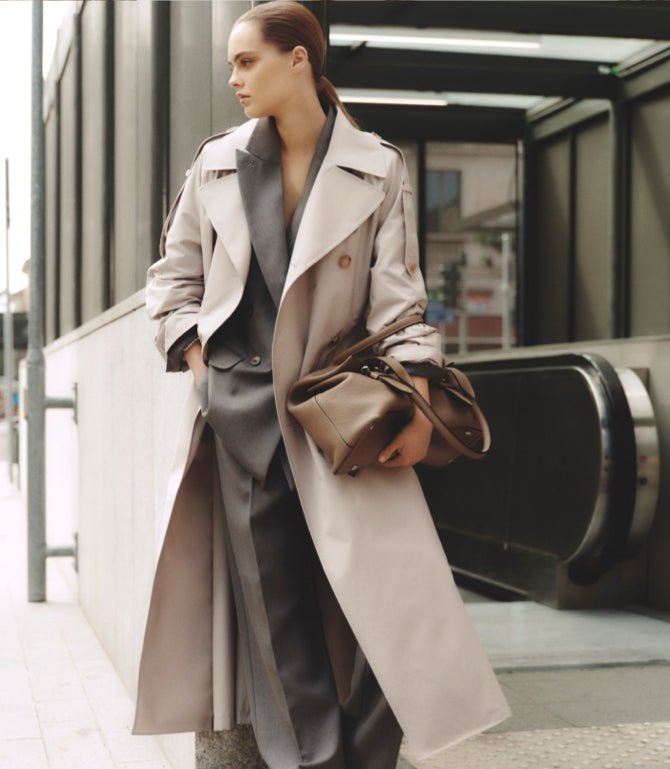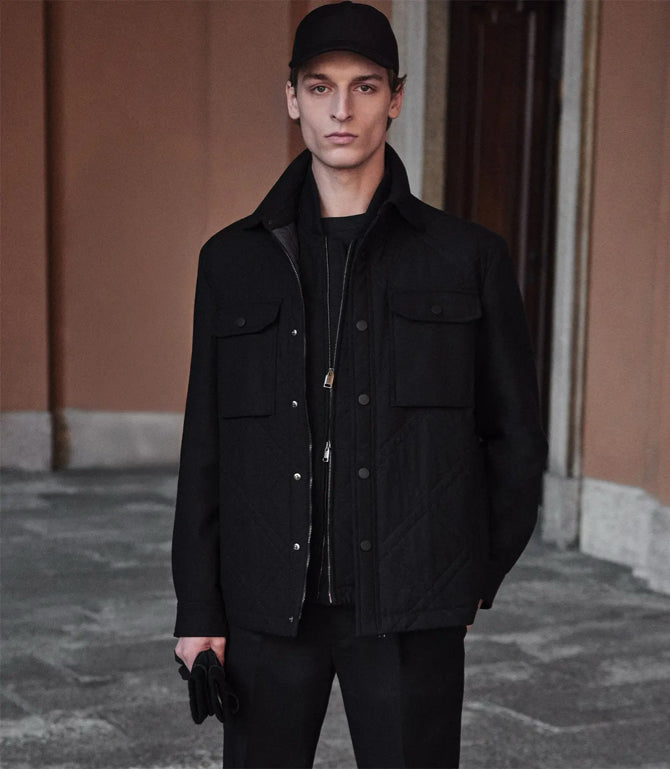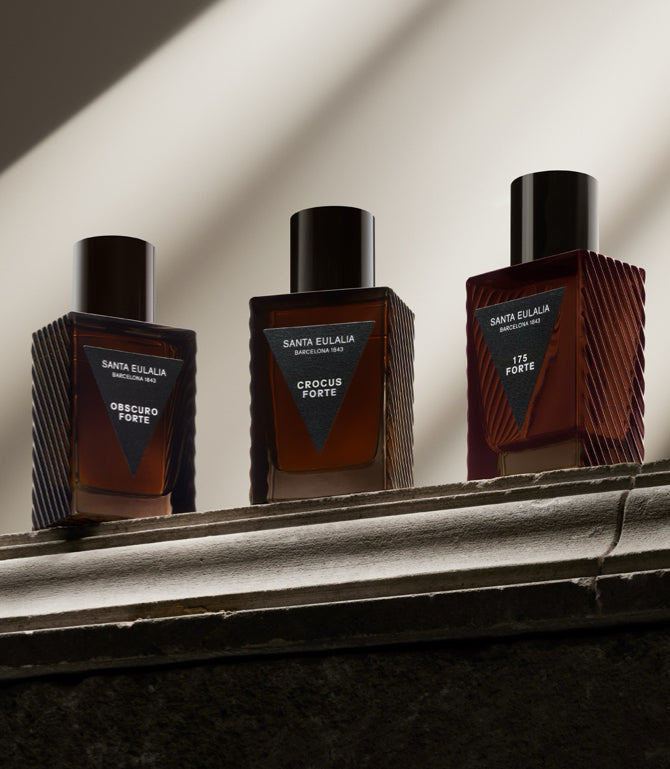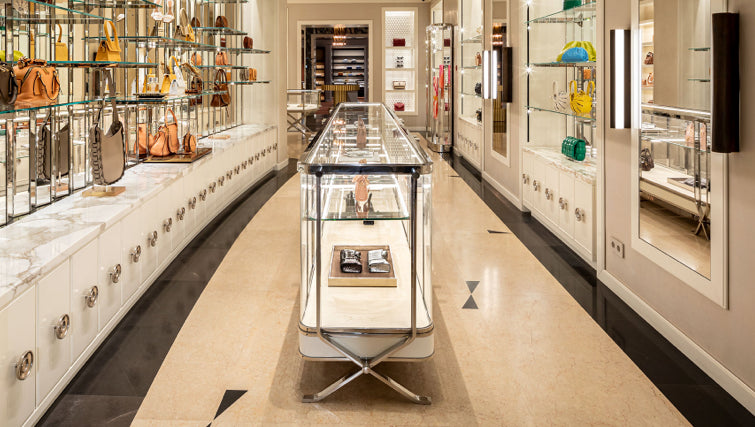THE HISTORY OF SANTA EULALIA
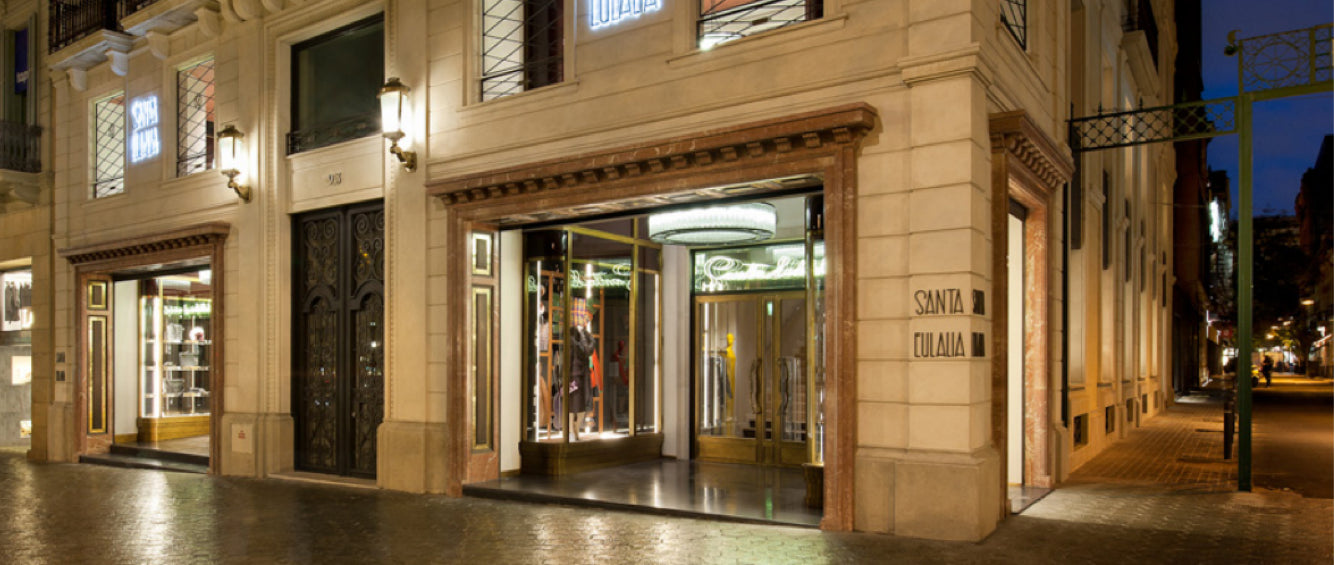
1843Josep Taberner and his son Salvador, from Guils de Cerdanya, open a textile store at number 15 Carrer Boqueria. |
1848Salvador Taberner moves the shop to number 23 on the same street, which at that time enjoyed bustling commercial activity. |
1854After repeated requests from the people of Barcelona, the government of Isabel II agrees to knock down the city walls. |

Store in Pla de la Boqueria. Detail from the painting by Achille Battistuzzi from 1873 exhibited at the MNAC (National Art Museum of Catalonia) in Barcelona. |
1859Salvador Taberner moves the store again to number 1 Carrer Boqueria, to larger premises cornering with Pla de la Boqueria, just a few metres from the Gran Teatro del Liceo opera house in Barcelona. This was the location of the old entrance, knocked down in 1777, where tradition places the martyrdom of Saint Eulalia in Roman times, thus the new store was known by the people of Barcelona as Almacenes Santa Eulalia. |
1894His son Domingo Taberner expands the establishment to the adjoining premises of numbers 3, 5, and 7 Carrer Boqueria. At that time the store already had a prestigious reputation as it was one of the biggest and best-stocked in Barcelona. |
1898Domingo Taberner decides to demolish the four buildings and build a new one in their place where he puts, on the top, an image of Saint Eulalia that can still be seen today. The modernista architect Pere Falqués, creator of the streetlamps on Passeig de Gràcia, supervises the permit and construction begins at the end of 1899. |
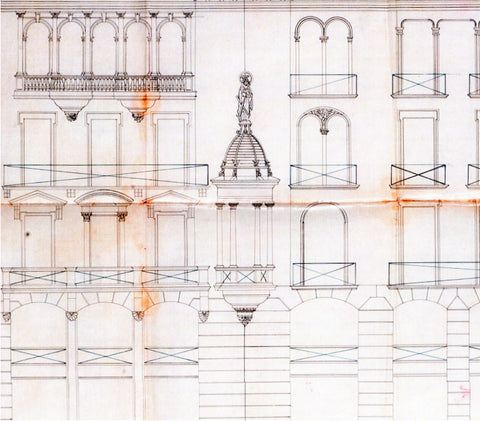
Planos del nuevo edificio del Pla de la Boquería en 1898. |
1901The new building, larger and more stately than the previous ones, was inaugurated as a spectacular multi-storey establishment, with the oficial name of "Santa Eulalia Department Store". |
1908Domingo Taberner, who at the time already was a great businessman and financier with interests in various sectors, is looking for a partner with whom to manage the business. He finds Lorenzo Sans Vidal, who already had a long experience in the field, owning a textile store since 1884 called Las Columnas on the same street, Boqueria 28. |
1915Domingo Taberner dies without offspring and his widow sells his stake to Sans, whoin turn dies two years later. |
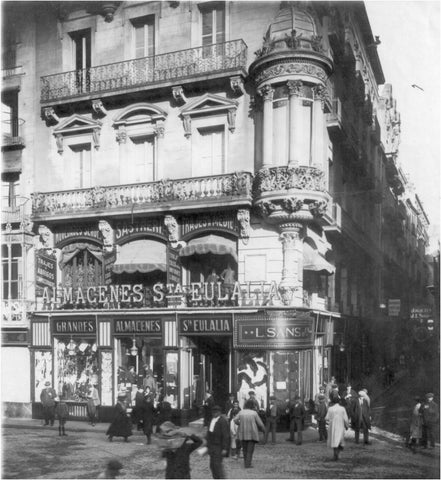
Shop of the Pla de la Boquería in 1928. |
1917His son Luis Sans Marcet takes over the business with only 22 years of age. His uncle Joan Marcet, owner of the Marcet de Terrassa bank, helps him with the management. |
1926The first runway is held on the top floor of the store, being pioneers in Barcelona of this new formula from Paris to present new fashion. An initiative of the talented Pedro Formosa, creative director of the house until 1970. Due to the great success of the runway, all those held in later years were made under strict personal invitation. |
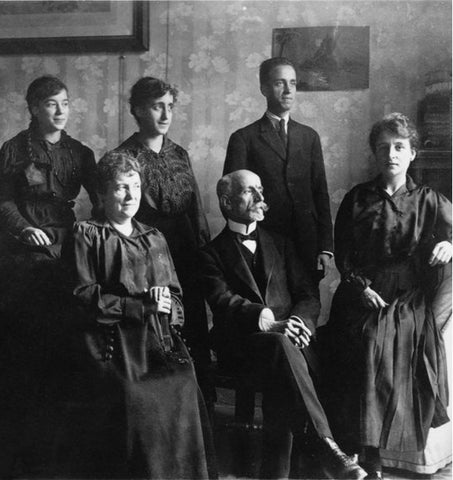 Lorenzo Sans with his wife, son Luis and daughters in 1915 |
1927-1934Advertising posters designed by the well-known poster artists José Luis Rey and Henry Ballesteros between 1927 and 1934 following the artistic movement of the time. |
1934Facade and interior of the Pla de la Boquería store after renovation. |
1927-1934
|
1936During the Civil War the company is collectivized, becoming Santeulalia, without the “a” of Santa, and dedicated to the manufacture of military uniforms for officers. An article in a local newspaper questioned the usefulness of a company dedicated to Haute Couture in the new republican society. |
1941Haute Couture and the sale of fabrics and accessories for women are transferred to the building on Passeig de Gràcia 60. The inauguration of the spectacular store of more than 2,500 square meters has to be delayed a few days due to mourning the death of D. Alfonso XIII in Rome. A few days later the first parade of the prestigious Spanish Haute Couture Cooperative takes place in the dome of the Colosseum theater, with the participation of Santa Eulalia and other large houses in the sector. |
 Poster from 1929 advertising custom military uniforms. |
|
1944Tailoring and made to measure shirts and the sale of men's accessories are transferred to 93 Passeig de Gràcia, closing the Boquería street shop, after more than 100 years of presence in the historic city center. |
1949Santa Eulalia opens a store in Tangier. In 1950, the collections that arrive from Barcelona are presented at the Hotel Minzah, enjoying great success among the international colony. The store closes years later due to the political instability in North Africa. |
1951Lorenzo Sans Roig, third generation, becomes part of the Santa Eulalia team. |
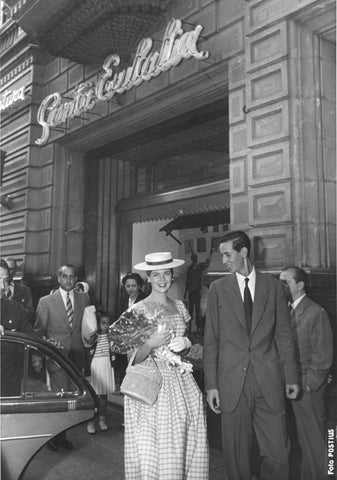 Lorenzo Sans Roig, third generation and father of Luis Sans, with Miss Cotton in 1960 at the inauguration of the 60 Passeig de Gràcia store. |
1955Santa Eulalia dedicates his shop windows to the Wagnerian Festivals of Barcelona, receiving the thanks of the composer's grandson. |
1956SAn international show of Haute Couture is held in Venice where dresses from Santa Eulalia and other Spanish designers are presented. |
1958Haute Couture workshops are expanded at the headquarters of Passeig de Gràcia 60, which already occupy several floors of the building. The company had more than 750 employees between its two establishments. |
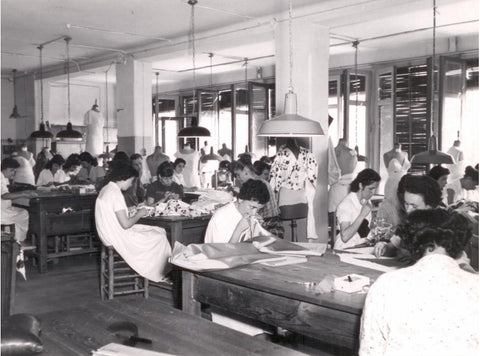 Haute Couture Workshop No. 3 of the Passeig de Gràcia 60 store in 1958. |
1960Santa Eulalia opens the water sports section and inaugurates a few years later its facilities in the Port Balís of St Andreu de Llavaneres, under the coordination of Ricardo Sans. In 1963 the firm participates in the first Nautical Show that was held in the city, an activity that Santa Eulalia will continue until the eighties. |
1963The Santa Eulalia team travels to New York to present their Haute Couture collections. |
1968Santa Eulalia launches his first women's ready-to-wear collection, with Jorge Olesti, as creative director while Pere Formosa was still in charge of Haute Couture. |
 Ricardo Sans with SSAARR the Princes of Asturias at the Santa Eulalia stand in the Boat Show at the beginning of the 70s. |
1981Lorenzo Sans takes over the management of the company, where he worked since he was 16, due to his father's advanced age. He is the third generation of the Sans family and sixth in charge of the company. |
1987A shop dedicated to men's fashion opens at Avenida Pau Casals, 8, the center of luxury fashion at that time. |
1988After the unexpected death of Lorenzo Sans, his son Luis succeeds him with only 22 years of age, repeating in some way the story that happened in 1917, when his grandfather took over the company with the same age. |
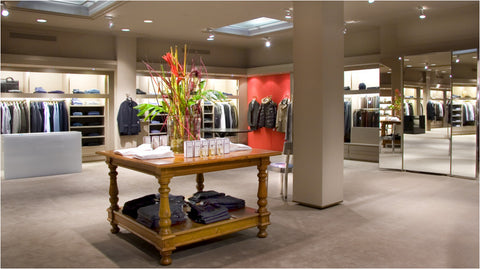 Pau Casals 8 Store in 2007. |
1992Joan Antoni Samaranch, president of the IOC, inaugurates the Barcelona 92 Olympic Games, with a suit made in the tailoring atelier of Santa Eulalia. |
1995The last Haute Couture parade of the house is celebrated and the prêt-à-porter moves from Passeig de Gràcia 60 to Ferràn Agulló 12. |
 |
2006The women's ready-to-wear department with large international designer firms is reopened in Passeig de Gràcia 93, at the head of which is Sandra Domínguez, wife of Luis Sans. |
2009The store temporarily moves to the adjoining premises on Passeig de Gràcia 91 while the building begins a deep remodeling. |
2010Santa Eulalia inaugurates its digital platform with an event sponsored by Scott Schuman. |
 |
2011After two years of work, the store is reopened on Passeig de Gràcia 93 in a place of more than 2,000 square meters. A large amount of furniture is recovered from the previous offices, including pieces from Boquería Street. The space has its own tailor-made shirt and shirt shop, ready-to-wear brands of men and women, a pop-up store and a restaurant with terrace. |
2014Santa Eulalia is named as one of the 30 best men's stores in the world by Pitti Uomo of Florence and The Business of Fashion. |
2015Santa Eulalia inaugurates its online sales space to serve its national and international clientele and reach an even wider audience. |
 Sandra Domínguez and Luis Sans in the provisional store of Passeig de Gràcia 91 with Scott Schuman. |
